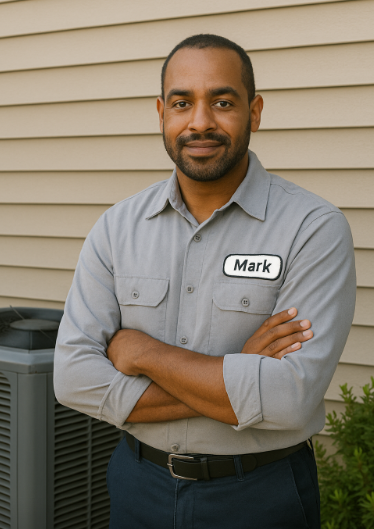When it comes to air conditioning, most homeowners think in terms of power and price. But the real efficiency of your system comes down to how well its parts work together—especially the condenser and coil. If you're shopping for a 2 ton condenser and coil or a Goodman 2 ton AC unit with coil, you’re not just looking for cooling—you’re looking for compatibility, cost-effectiveness, and reliability.
And that’s where the real conversation starts.
Why Condenser and Coil Compatibility Matters
Let’s start with the basics: your AC condenser is the outdoor unit that releases heat collected from your home. The evaporator coil, which typically sits inside next to the furnace or air handler, is what absorbs heat. If these two aren’t properly matched—both in terms of capacity and efficiency ratings—you’ll likely lose performance, void manufacturer warranties, and waste energy.
Think of it like putting racing tires on a minivan. Sure, you’ll drive, but it’s not going to work the way it should.
That’s why buying a 2 ton AC condenser and coil as a packaged set is so important. These matched systems ensure maximum SEER2 efficiency, better comfort, and a longer system lifespan.
Is a 2 Ton System Right for You?
Before diving into product specs, it's critical to determine whether a 2 ton split system is the correct size for your space. Generally, a 2 ton unit (24,000 BTUs) is ideal for homes around 1,000–1,200 square feet, depending on insulation, sun exposure, and ceiling height.
Here’s a helpful BTU calculator to estimate the right tonnage for your home.
Oversizing a system can cause short cycling, reduced dehumidification, and increased wear and tear. Undersizing leads to long run times and poor cooling. The solution? Nail your load calculation first—then shop for a Goodman 2 ton AC unit with coil or a comparable system.
What Makes Goodman a Go-To Brand?
If you’re eyeing a Goodman 2 ton AC condenser and coil, you’re already heading in the right direction. Goodman has long been known for its balance of reliability, warranty protection, and affordability. And now, with their newer R-32 refrigerant models, you’re also getting enhanced efficiency with lower global warming potential (GWP).
One standout? The Goodman 3 Ton 14.5 SEER2 R-32 System, which serves as a perfect benchmark in its class. While slightly larger than a 2 ton system, it gives us a blueprint for what to expect in terms of efficiency, component quality, and refrigerant performance.
R-32 Refrigerant: The Game Changer
If you're shopping in 2025, it's impossible to ignore the refrigerant conversation. The HVAC industry is in the middle of a phaseout of R-410A due to its environmental impact, and R-32 is leading the charge as a next-gen solution. According to Daikin, R-32 has a GWP of 675—a massive improvement over R-410A’s 2088.
So when you’re comparing units, look for those that use R-32 to future-proof your investment and stay compliant with evolving environmental standards.
What to Look For in a 2 Ton AC Condenser and Coil
Not all matched systems are built the same. Whether you’re buying from The Furnace Outlet or another supplier, here’s a checklist to make sure you're making a smart investment:
-
Matching SEER2 Ratings: Aim for at least 14.5 SEER2, the new efficiency baseline.
-
Refrigerant Type: Choose R-32 for lower environmental impact and better heat exchange performance.
-
Warranty Coverage: Goodman offers a 10-year parts limited warranty on registered products.
-
TXV vs. Piston Coil: Thermal expansion valves (TXVs) improve modulation and performance over piston systems.
-
Coil Material: Opt for aluminum coils to reduce corrosion and extend system life.
And if you’re considering an upgrade or a replacement, always make sure the furnace, air handler, or heat pump is compatible with your new condenser and coil setup.
Installation Tips from the Field
Matching your 2 ton condenser and coil is one thing—installing it properly is another. Based on years of field experience, here are a few must-follow steps to ensure success:
-
Pull a proper vacuum and confirm with a micron gauge.
-
Weigh in refrigerant charges accurately—especially with R-32 systems.
-
Check static pressure and adjust airflow to spec (especially with high-efficiency ECM blowers).
-
Slope the drain line, secure the coil, and always check for refrigerant leaks.
For a more visual breakdown, I recommend this Rasmussen Mechanical Services article on coil installation basics.
Don’t Forget About Ductwork
Even the most advanced 2 ton split system won’t perform correctly if your ducts are undersized, leaky, or poorly insulated. Before you buy, consider having a Manual D duct design performed—or at the very least, inspect existing ductwork for pressure imbalances.
According to Energy Vanguard, most duct systems are undersized by 30% or more. Don’t let bad ductwork choke a good system.
Where to Buy a 2 Ton Split System the Right Way
When it comes to sourcing quality HVAC systems, I recommend avoiding the big-box stores for serious purchases. For something like a 2 ton AC condenser and coil, you want:
-
Transparent model specifications
-
R-32 refrigerant compatibility
-
Strong warranty support
-
Reputable shipping and returns policy
That’s why platforms like ACWholesalers and The Furnace Outlet stand out—they specialize in HVAC, not just selling units but also helping you get the right match.
Final Thoughts
If you're shopping for a 2 ton mini split or a traditional Goodman 2 ton AC unit with coil, make sure you're not just buying BTUs—you're buying peace of mind, compatibility, and performance.
And if you're looking for a slightly more powerful, eco-forward option, the Goodman 3 Ton 14.5 SEER2 R-32 System makes a solid case.
Whether you're a DIYer, a homeowner working with a contractor, or an HVAC pro, one thing is clear: the condenser and coil are the heart of your cooling system. Treat them with the importance they deserve—and enjoy seasons of comfort, reliability, and lower bills.







